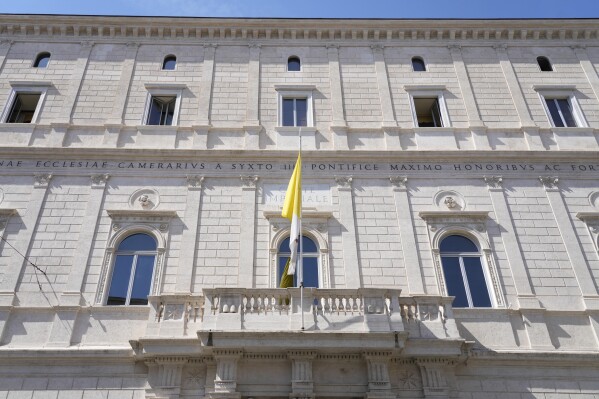Over 3 years after it was stolen, a van Gogh painting is recovered but with some damage
BRUSSELS (AP) — More than three years after it was stolen from a museum that was shut to prevent the spread of the coronavirus, a painting by Dutch master Vincent van Gogh has been recovered, a little worse for wear, the Groninger Museum in the Netherlands said Tuesday.
Van Gogh’s “The Parsonage Garden at Nuenen in Spring,” which was painted in 1884, was snatched in an overnight raid in March 2020 from The Singer Laren museum east of Amsterdam. It was there on loan from the Groninger Museum.
“The Groninger Museum is extremely happy and relieved that the work is back,” its director, Andreas Blühm, said in a statement. “We are very grateful to everyone who contributed to this good outcome.”
The museum paid tribute to Dutch art sleuth Arthur Brand for his “key role in this case.”
 Former No. 1 tennis player Simona Halep gets 4-year ban in doping case
Former No. 1 tennis player Simona Halep gets 4-year ban in doping case
 A Russian passenger jet with a hydraulics problem makes a safe emergency landing in an open field
A Russian passenger jet with a hydraulics problem makes a safe emergency landing in an open field
 Vatican opens up a palazzo built on ancient Roman ruins and housing its highly secretive tribunals
Vatican opens up a palazzo built on ancient Roman ruins and housing its highly secretive tribunals
It declined to provide further details about how it was found. It said “the painting has suffered, but is – at first glance – still in good condition.” The work will be scientifically examined in coming months. It’s being kept temporarily at the Van Gogh Museum in Amsterdam.
Its value was not provided. On the rare occasions when Van Gogh’s paintings come up for sale, they fetch millions at auction. However, an insurance company had paid the Groninger Museum for the loss and is now the formal owner, although the museum says it will exercise its right to first purchase of the work.
It said that it hopes to have “The Parsonage Garden at Nuenen in Spring” back on display soon, although this “could take weeks, if not months.”
The 25-by-57-centimeter (10-by-22-inch) oil on paper painting shows a person standing in a garden surrounded by trees, with a church tower in the background.
It dates to a time when van Gogh had moved back to his family in a rural area of the Netherlands and painted the life he saw there, including with his famous work “The Potato Eaters,” in mostly somber tones.
Later, he moved to southern France, where he developed a far more colorful, vibrant style of painting as his health declined before his death in 1890.
Disclaimer: The copyright of this article belongs to the original author. Reposting this article is solely for the purpose of information dissemination and does not constitute any investment advice. If there is any infringement, please contact us immediately. We will make corrections or deletions as necessary. Thank you.




